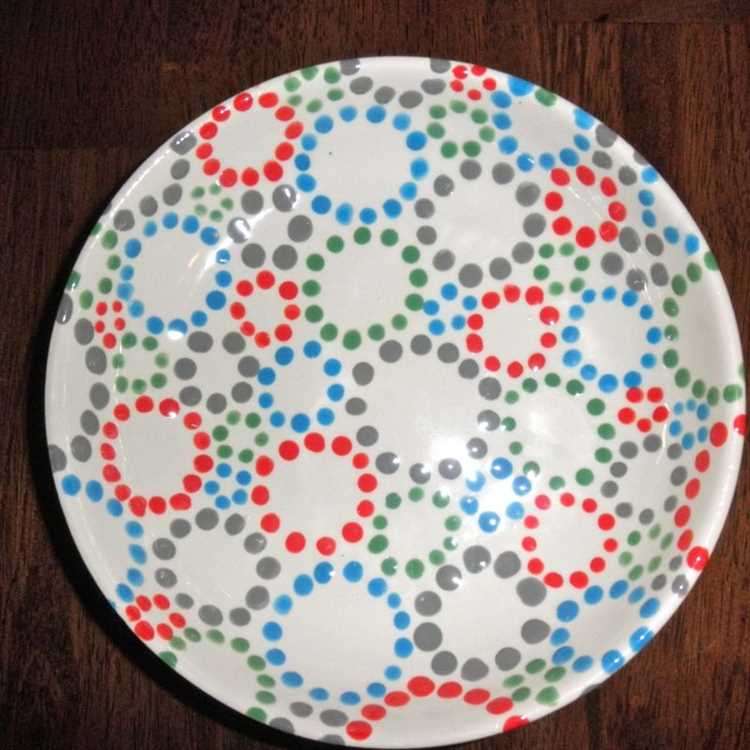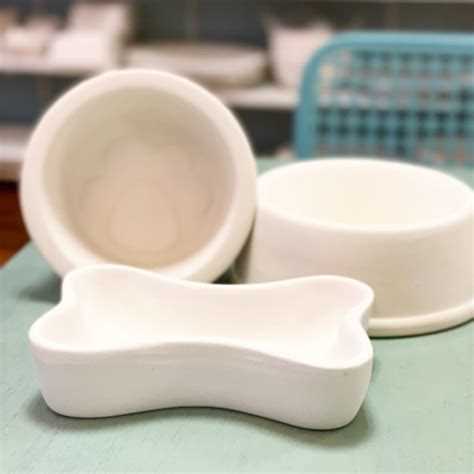When it comes to pottery, one of the most important decisions you’ll have to make is what type of paint to use. The right paint can really make a difference in the final look and durability of your pottery, so it’s crucial to choose wisely.
There are several types of paints that are commonly used on pottery, each with its own unique qualities and benefits. One of the most popular options is underglaze paint, which is applied before the pottery is fired in the kiln. This type of paint creates rich, vibrant colors that are permanent and won’t fade over time. Underglaze paint is perfect for detailed designs and intricate patterns.
If you’re looking for a more versatile option, you might consider using acrylic paint. Acrylic paints are water-based and easy to work with, making them a great choice for beginners. They can be applied to both fired and unfired pottery and are available in a wide range of colors. Acrylic paints also dry quickly, allowing you to layer colors and add details without waiting too long between coats.
Another popular option is glaze paint, which is applied after the pottery has been fired. Glazes create a glossy, glass-like finish and can add depth and dimension to your pottery. They come in a variety of finishes, including transparent, opaque, and matte. Keep in mind that glazes can be a bit trickier to work with, as they require careful application and proper firing techniques for the best results.
Ultimately, the best paint for pottery will depend on your specific needs and preferences. Consider factors such as the desired finish, level of experience, and the type of kiln you have access to. Experimenting with different types of paints and techniques can also be a fun and creative way to explore the world of pottery and find your own unique style.
What is pottery?
Pottery refers to any objects made from clay that are shaped and hardened through a process of drying and firing. It is one of the oldest and most widespread forms of art and craftsmanship found in human history.
While pottery can encompass a broad range of items, including dishes, vases, and sculptures, it typically refers to functional objects that are used for cooking, storing food, or serving. The art of pottery has been practiced by various civilizations throughout time, and each culture has developed its own unique techniques, styles, and designs.
Creating pottery involves several steps, which include preparing the clay, shaping it into the desired form, and then firing it in a kiln to harden and strengthen the material. Depending on the desired outcome, various techniques such as coiling, slabbing, and wheel-throwing can be used to shape the clay.
- Coiling: Constructing pottery by adding coils or ropes of clay on top of each other.
- Slabbing: Constructing pottery by using flat pieces of clay that are joined together.
- Wheel-throwing: Shaping pottery by spinning a clay body on a potter’s wheel.
Once the pottery is shaped, it is left to dry and then fired in a kiln, which is a high-temperature oven. The firing process transforms the clay into a solid and durable material by removing the water and chemically altering its molecular structure.
After the initial firing, decorations and glazes can be added to the pottery to enhance its appearance and functionality. Glazes are a type of liquid mixture that contains minerals and chemicals. When applied to the pottery and fired again, they can create a smooth and colorful surface, as well as provide protection from water absorption.
Overall, pottery is not only a functional art form but also a reflection of human creativity, culture, and history. Whether it’s creating practical items for everyday use or intricate works of art, pottery continues to be valued and appreciated for its beauty, craftsmanship, and versatility.
Importance of the right paint
Choosing the right paint for pottery is crucial for achieving the desired results and ensuring the longevity of your artwork. The type of paint you use can significantly impact the appearance, durability, and safety of your pottery pieces. Here are some reasons why selecting the right paint is important:
- Visual Appeal: The paint you choose will determine the color, texture, and finish of your pottery. Different types of paint offer various effects, such as glossy, matte, metallic, or textured finishes. The right paint can enhance the visual appeal of your pottery and make it stand out.
- Longevity: Using a high-quality paint that is specifically designed for pottery ensures that your artwork will last for a long time. Pottery paints are formulated to withstand high temperatures during firing, resist fading, and maintain their color vibrancy over time. Properly painted pottery can maintain its beauty even after years of use.
- Durability: The right paint will provide a protective layer to your pottery, making it more resistant to scratches, chips, and cracks. It will also help to seal the surface, preventing moisture from seeping into the clay, which can cause damage or deterioration over time. A durable paint will make your pottery more resistant to wear and tear.
- Safety: Some paints may contain toxic substances, such as lead or cadmium, which can be harmful if ingested or inhaled. Choosing pottery paints that are certified safe for food use, non-toxic, and lead-free is essential, especially if you plan to create functional pottery such as bowls or mugs. It is important to prioritize the safety of yourself and those who will use your pottery.
Ultimately, using the right paint for pottery ensures that your creations are visually appealing, durable, long-lasting, and safe. It is worth investing in high-quality paints that are specifically formulated for pottery, as they will provide the best results and protect your artwork for years to come.
Types of paint for pottery
When it comes to decorating pottery, there are several types of paint that can be used. Each type of paint has its own unique characteristics and benefits, and choosing the right paint for your project is important to ensure the best results. Here are some of the most common types of paint for pottery:
- Underglaze paint: Underglaze paint is a type of ceramic paint that is applied to pottery before it is glazed and fired. It is made from finely ground pigments mixed with water or a binder, and it is available in a wide range of colors. Underglaze paint is typically used for detailed designs and patterns, and it can create a smooth, matte finish.
- Glaze paint: Glaze paint, also known as ceramic glaze, is a type of paint that is applied to pottery after it has been fired. It is typically made from a mixture of silica, fluxes, and colorants, and it is available in a variety of colors and finishes. Glaze paint is often used to add a shiny, glass-like surface to pottery, and it can be transparent or opaque depending on the desired effect.
- Overglaze paint: Overglaze paint is a type of paint that is applied to pottery after it has been glazed and fired. It is typically made from metallic pigments mixed with a medium, and it is available in a range of colors. Overglaze paint is used to add decorative details and accents to glazed pottery, and it can create a lustrous, reflective finish.
In addition to these types of paint, there are also specialty paints available for pottery, such as enamel paint, luster paint, and engobe paint. These paints offer their own unique properties and effects, and they can be used to achieve specific artistic techniques and styles.
| Paint Type | Application Method | Drying Time | Finish |
|---|---|---|---|
| Underglaze paint | Applied before glazing and firing | Can be air-dried or set during firing | Matte |
| Glaze paint | Applied after firing | Dries during firing | Shiny, glass-like |
| Overglaze paint | Applied after glazing and firing | Dries quickly upon application | Lustrous, reflective |
Before choosing a paint for your pottery project, consider the desired effect, the level of detail, and the firing temperature of the clay. Experimenting with different types of paint can lead to unique and beautiful results, so don’t be afraid to try new techniques and combinations!
Factors to consider when choosing paint
When choosing paint for pottery, there are several factors to consider. The type of paint you choose can greatly impact the appearance, durability, and safety of your finished piece. Here are some important factors to keep in mind:
- Type of pottery: Different types of pottery may require different types of paint. For example, earthenware and stoneware may require high-temperature paints that are capable of withstanding the firing process, while porcelain and bone china may require a different type of paint that is more suited for their delicate nature.
- Intended use: Consider how the pottery will be used. If it will be used for functional purposes, such as for food or drink, it is important to choose a paint that is food-safe and non-toxic. If it will be used for decorative purposes only, you may have more flexibility in choosing a paint.
- Surface finish: The type of surface finish you desire can also influence your paint choice. Some paints are designed to create a glossy finish, while others may create a matte or textured finish. Consider the overall aesthetic you want to achieve with your pottery.
- Application method: Think about how you plan to apply the paint to the pottery. Some paints are suitable for brush application, while others may be better suited for airbrushing or spray application. Ensure that the paint you choose is compatible with your desired application method.
- Color selection: Consider the range of colors available in the paint line. Some paints may offer a wider variety of colors, allowing you to create more intricate designs and patterns on your pottery. Others may have a more limited color range.
- Cost: Your budget may also play a role in your paint selection. Different paints may vary in cost, so consider the price per unit and how much paint you will need for your project. Also, keep in mind that higher-quality paints may be more expensive, but they may also offer better performance and longevity.
By considering these factors and doing some research on the different types of paints available, you can make an informed decision when choosing the best paint for your pottery project. Remember to always follow the manufacturer’s instructions for proper use and application of the paint.
Best paint brands for pottery
When it comes to choosing the best paint for pottery, there are several reputable brands that offer high-quality products. Here are some of the top paint brands that ceramic artists and enthusiasts swear by:
- Amaco: Amaco is a well-known brand in the pottery community and offers a wide range of glazes and underglazes. Their products are known for their vibrant colors and durability.
- Duncan: Duncan is another popular brand that offers a variety of paints and glazes for pottery. They have a range of colors and finishes to choose from, making it easy to find the perfect paint for your project.
- Mayco: Mayco is known for its extensive line of ceramic glazes and underglazes. They offer a wide range of colors and finishes, including matte, gloss, and specialty glazes.
- Speedball: Speedball is a favorite brand among both beginners and experienced potters. They offer a range of products, including underglazes and glazes, that are known for their ease of use and vibrant colors.
- Amethyst: Amethyst is a newer brand in the market but has quickly gained popularity for its high-quality paint. They offer a range of glazes and underglazes that are suitable for both beginners and professionals.
These brands are known for their quality, durability, and range of colors. Whether you’re a beginner or an experienced potter, choosing paint from one of these trusted brands will ensure that your pottery projects turn out beautifully.
Tips for using paint on pottery
When it comes to painting pottery, there are a few tips and tricks that can help you achieve the best results. Whether you are a beginner or an experienced artist, these tips will ensure that your painted pottery looks professional and lasts for a long time.
- Choose the right type of paint: There are different types of paint available for pottery, such as underglaze, overglaze, and acrylic. Understanding the characteristics of each type and choosing the one that suits your project is crucial for achieving the desired effect.
- Prepare the surface: Before painting, make sure the pottery is clean and free from any dirt or dust. You can wipe it with a damp cloth or use a mild soap solution to remove any residue. This will ensure that the paint adheres properly to the surface.
- Use a primer: If you’re using acrylic paint, applying a primer can help improve its adhesion and durability. It creates a barrier between the paint and the pottery, preventing it from peeling or chipping over time.
- Experiment with different techniques: Painting pottery allows for a wide range of techniques, such as brush strokes, layering, sponging, and stenciling. Don’t be afraid to experiment and try different techniques to create unique and interesting designs.
- Allow for proper drying and curing: After painting, make sure to let the pottery dry completely before applying any additional layers or finishes. Depending on the type of paint used, curing may be necessary to ensure the longevity of the design. Follow the manufacturer’s instructions for drying and curing times.
- Protect the painted surface: To protect the painted surface and make it more durable, consider applying a clear glaze or sealant over the paint. This will help protect the design from fading, scratching, and wear and tear.
- Clean and care for painted pottery: When cleaning painted pottery, avoid using harsh chemicals or abrasive materials that may damage the painted surface. Instead, use a mild soap and water solution and a soft cloth or sponge to gently clean the pottery. Additionally, avoid exposing painted pottery to extreme temperatures, as it may cause the paint to crack or peel.
By following these tips, you can enhance your pottery painting skills and create beautiful and long-lasting painted pottery pieces. Remember to have fun and let your creativity shine through!
FAQ:
What are the different types of paint that can be used on pottery?
There are several types of paint that can be used on pottery, including underglaze paints, overglaze paints, and glazes. Underglaze paints are applied before the pottery is fired and are commonly used for detailed designs. Overglaze paints are applied after the pottery has been fired and are often used for adding decorative elements. Glazes, on the other hand, are a type of paint that is made from a mixture of minerals and are used to give the pottery a glossy finish.
How do underglaze paints differ from overglaze paints?
Underglaze paints are applied to pottery before it is fired, while overglaze paints are applied after the pottery has been fired and glazed. Underglaze paints are usually more stable and durable, and they can withstand higher temperatures during firing. Overglaze paints are not as durable and can be prone to chipping or fading over time. However, overglaze paints offer more versatility in terms of colors and effects that can be achieved.
What type of paint is best for beginners?
For beginners, underglaze paints are often recommended because they are easier to work with and provide more control. Underglaze paints can be applied directly to the pottery and can be easily blended or layered to create different effects. They also tend to have a more forgiving application process. Overglaze paints, on the other hand, require more skill and experience to use effectively, as they can be more delicate and require special techniques for application.
Can any type of paint be used on pottery?
No, not all types of paint can be used on pottery. It is important to choose paints that are specifically formulated for use on ceramics and pottery. Regular acrylic or oil paints, for example, are not suitable for use on pottery, as they may not adhere properly to the surface and may not withstand the firing process. It is best to choose paints that are labeled as being specifically for use on pottery, such as underglaze or overglaze paints.
What are the advantages of using glazes on pottery?
Glazes offer several advantages when used on pottery. They provide a protective coating that helps to prevent moisture and stains from penetrating the surface of the pottery. Glazes also enhance the appearance of the pottery by giving it a glossy and smooth finish. Additionally, glazes can add depth and dimension to the colors and designs on the pottery. They can also provide a barrier that helps to make the pottery more heat-resistant and durable. Overall, using glazes can help to improve the longevity and aesthetic appeal of pottery.


